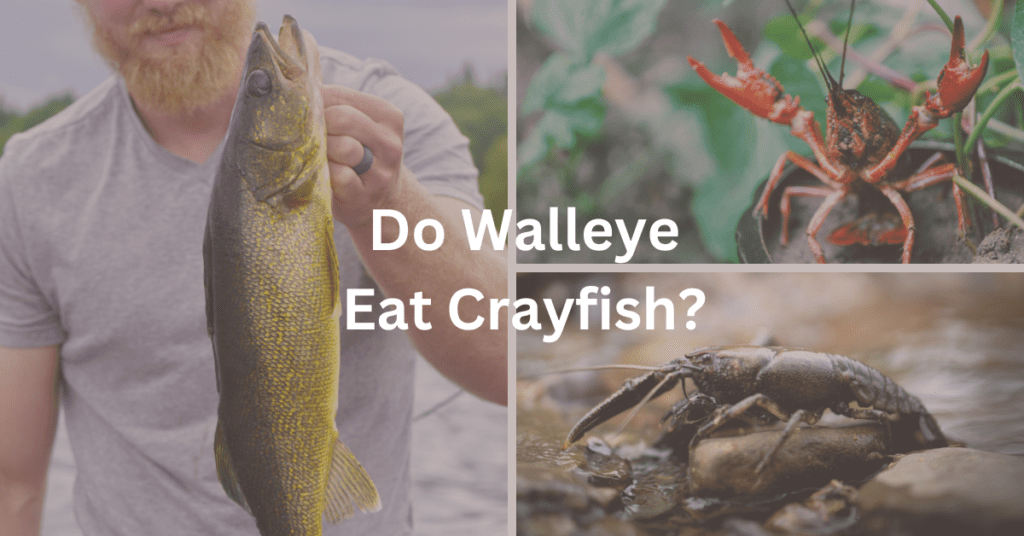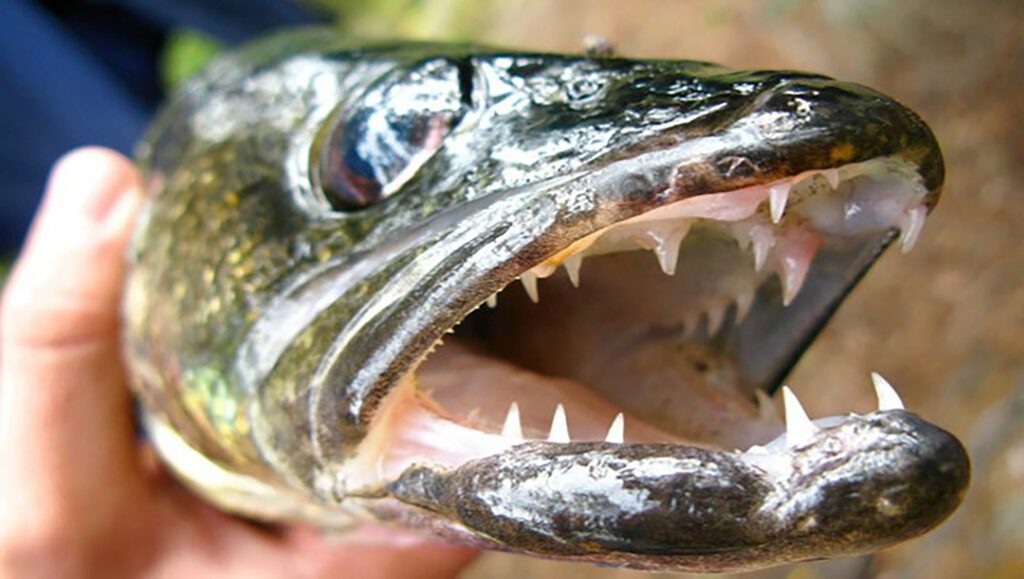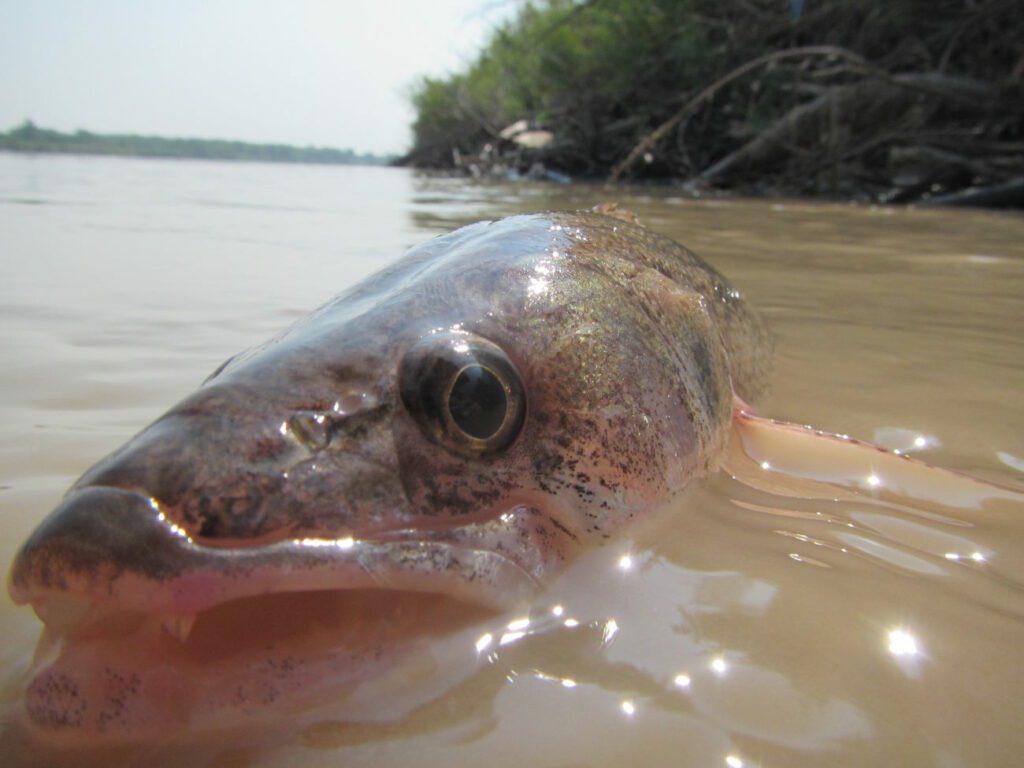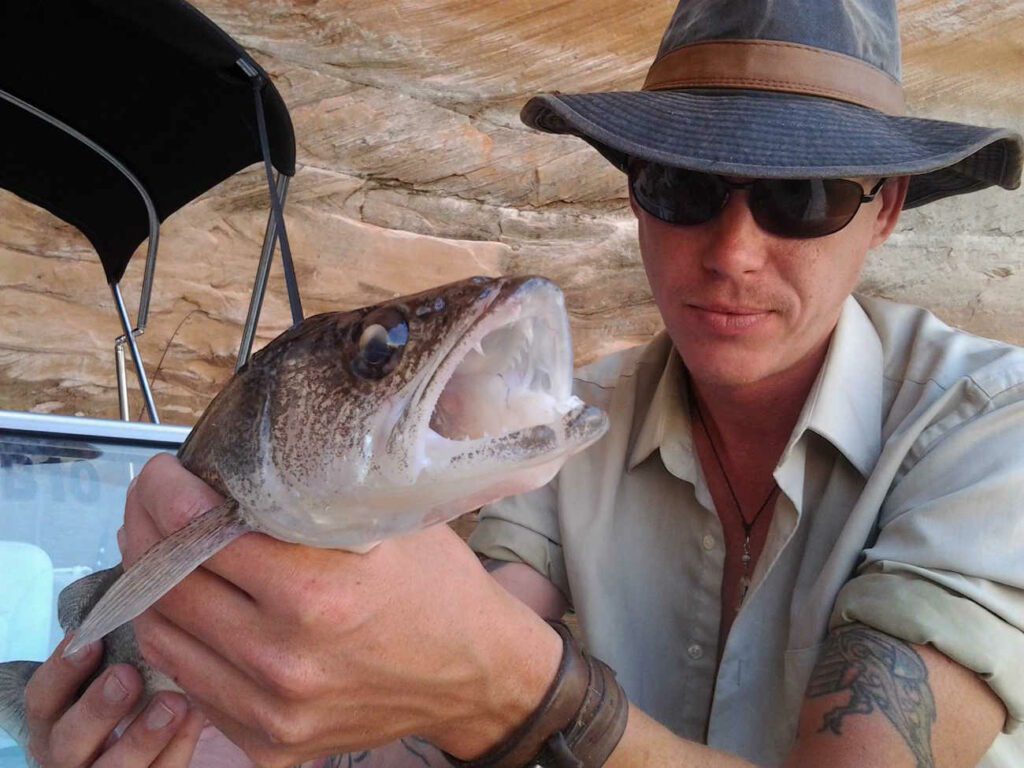Yes. Walleye eat crayfish. Both scientific studies and anecdotal evidence from fishermen show that walleye do indeed eat crayfish.
Read on to learn more about why walleye eat crayfish and how to use this information to catch walleye.

Walleye Eat Crayfish
Walleye, a popular freshwater game fish, have long been known for their diverse diet. One question that often arises is whether walleye consume crayfish. The answer is a resounding “yes.” Let’s delve into the topic and explore the evidence supporting this intriguing feeding behavior.
Scientific studies have shed light on the eating habits of walleye, providing valuable insights. Research examining the stomach contents of these fish has consistently revealed the presence of crayfish. These studies have shown that crayfish can be a significant food source for walleye, particularly during certain times of the year.

Furthermore, the anecdotal evidence from fishermen reinforces the notion that walleye indeed have a taste for crayfish. Anglers have reported instances where walleye have regurgitated crayfish parts while being held in livewells. Additionally, when fishermen have examined the stomach contents of walleye, they have discovered remnants of crayfish.
Interestingly, some fishermen have noticed that walleye exhibit a particular fondness for crayfish when the crustaceans have recently molted, acquiring softer shells. Crayfish undergo molting cycles throughout their lives, with frequency varying from several times a month when young to several times a year when older.
These various data points support the fact that walleye actively consume crayfish as part of their diet. As we delve deeper into this topic, we’ll explore the reasons behind this feeding behavior and its implications for anglers seeking to target walleye effectively.
Why Do Walleye Target Crayfish?
Walleye’s preference for crayfish as a food source can be attributed to several compelling reasons. One significant factor is the abundance of crayfish in certain waters, particularly when compared to other forage fish during specific times of the year. This abundance makes crayfish an easily accessible and reliable food option for walleye.

Moreover, crayfish offer a rich nutritional profile that is highly beneficial for walleye. These crustaceans are packed with essential proteins, fats, and minerals, making them an excellent source of sustenance. The high protein content, in particular, supports walleye’s growth, development, and overall health.
Another reason is the unique movement and behavior of crayfish. These crustaceans scuttle along the lake or riverbed, often in a stop-and-start fashion, which can trigger the predatory instincts of walleye. The sudden movements and bursts of activity from crayfish make them enticing targets for walleye to pursue.

Another advantage of targeting crayfish is their availability throughout various seasons. While other forage fish may experience fluctuations in their populations or become less active during certain times of the year, crayfish remain a consistent food source for walleye. This reliability plays a crucial role in sustaining walleye populations and their growth.
Furthermore, crayfish are known to inhabit areas with ample cover, such as rocky structures, submerged vegetation, or underwater structures like logs and boulders. Walleye, being ambush predators, often seek out such cover to conceal themselves and lie in wait for potential prey. The presence of crayfish in these areas provides an added incentive for walleye to target these locations, increasing their chances of successful feeding.
Using Live Crayfish to Catch Walleye
Using live crayfish as bait can be an effective strategy for targeting walleye. Let’s explore the techniques and considerations when using live crayfish to entice walleye.

Firstly, many fishermen opt to remove the claws of crayfish before using them as bait. This step helps prevent the crayfish from using their claws to hide or escape, making them more vulnerable to walleye. By removing the claws, anglers can enhance the presentation of the crayfish as bait and increase its attractiveness to walleye.
To rig the crayfish, hooking them through the tail is a commonly employed method. This ensures that the crayfish can move naturally in the water, simulating its natural behavior. The movement of the tail acts as an enticing trigger for nearby walleye, attracting their attention and prompting them to strike.
One advantage of using live crayfish as bait is that it eliminates the need for additional weights, bobbers, or complex rigs. Walleye tend to reside near the bottom of the water column, particularly in areas with cover and structure. When using live crayfish, simply cast them in areas where walleye are suspected to be present and let them sink to the bottom.

Allowing the crayfish to move about freely on the bottom is essential for maximizing its effectiveness as bait. Walleye are known to be ambush predators, lying in wait for unsuspecting prey. By allowing the crayfish to roam and scuttle along the bottom, it imitates the natural movement of live prey and increases the chances of attracting walleye.
Occasionally tugging the line helps dislodge the crayfish from potential hiding spots underneath rocks or submerged structures. This action simulates the crayfish’s attempt to escape, which can trigger the predatory instincts of nearby walleye. It’s important to exercise caution and not tug too forcefully, as you don’t want to dislodge or lose the bait altogether.
Using Crayfish Imitating Lures to Catch Walleye
Utilizing lures that imitate crayfish can be a highly effective method for enticing walleye. Drawing from the provided facts, as well as insights from my training data, let’s explore the techniques and considerations when using such lures to target walleye.
When selecting lures to imitate crayfish, it is essential to consider the colors that closely resemble the local crayfish population. Rusty red is a particularly common color among crayfish, but they can also come in various other hues. These may include shades of brown, green, olive, orange, and even blue or black, depending on the specific species and the environment they inhabit. By matching the lure’s color to that of the local crayfish, anglers can increase the lure’s effectiveness and appeal to walleye.

Crankbaits that mimic the appearance of crayfish can be an excellent choice for enticing walleye. Selecting crankbaits in colors that resemble local crayfish populations can effectively trigger strikes from walleye. The lifelike movement and diving action of crankbaits, combined with their resemblance to crayfish, make them a popular choice among anglers targeting walleye.
Another effective lure option for imitating crayfish is the use of tube jigs. These soft plastic lures, designed to mimic the shape and movement of crayfish, can be highly enticing to walleye. Similar to selecting crankbaits, choosing tube jigs in colors that replicate the local crayfish population enhances their appeal to walleye.

When presenting these crayfish imitating lures, it’s worth noting that walleye often exhibit a preference for jigs that are dragged along the bottom rather than hopped. This technique imitates the natural movement of crayfish as they scuttle along the lake or riverbed. By maintaining contact with the bottom and imparting a steady, dragging motion, anglers can simulate the behavior of crayfish and increase the likelihood of triggering strikes from walleye.
Alternative Names for Crayfish
- Crawfish
- Crawdads
- Mudbugs
- Freshwater lobsters
- Craybobs
- Yabbies
- Mountain lobsters
- Mini-lobsters
- Crawcrabs
- Crawly creatures
Frequently Asked Questions
While crayfish are a favored bait for walleye, other effective options include minnows, leeches, nightcrawlers, and various artificial lures like jigs, spinners, and soft plastics.
Crayfish can be found in many freshwater ecosystems, including lakes, rivers, and streams. However, their presence may vary depending on the specific habitat and geographical region. Walleye populations in waters without crayfish may rely on alternative prey items.
While walleye are known for their nocturnal feeding tendencies, they are not strictly nocturnal. They can be successfully targeted during both day and night, with fishing strategies adjusting based on factors like water clarity, weather conditions, and preferred forage availability.
Summary: Do Walleye Eat Crayfish?
- Walleye have been found to eat crayfish, making them a significant part of their diet during certain times of the year.
- Fishermen have reported finding crayfish parts in the stomachs of walleye and observing crayfish being regurgitated when caught.
- Crayfish are abundant in some waters, providing a reliable food source for walleye.
- Crayfish offer a nutritious meal for walleye, being rich in proteins, fats, and minerals.
- Live crayfish can be used as bait by removing the claws and hooking them through the tail to imitate natural movement.
- Lures that imitate crayfish, such as crankbaits and tube jigs, can be effective in attracting walleye, especially when matched to local crayfish colors.
- Walleye often prefer jigs dragged along the bottom, simulating the movement of crayfish.
- Crayfish can go by various names, including crawfish, crawdads, mudbugs, and freshwater lobsters.
